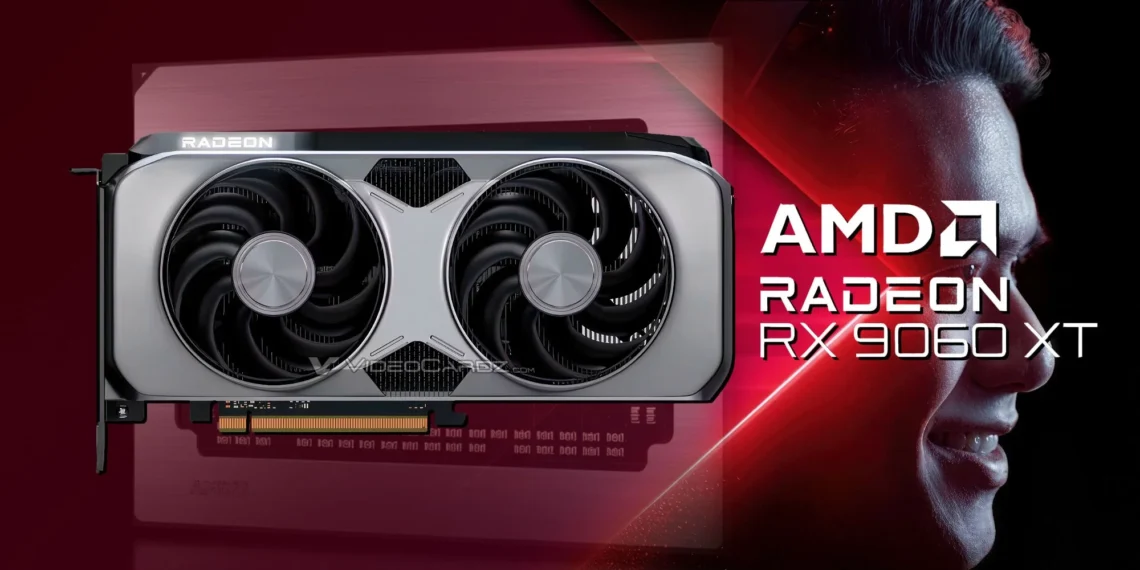AMD Officially Launches Radeon RX 9060 XT With Dual VRAM Variants, Limited 8GB Samples
AMD has finally revealed their much-awaited Radeon RX 9060 XT 8 GB graphics card, and the response has been overwhelmingly positive! In fact, sources say that the company has even sent out limited samples of the card to reviewers for an early hands-on experience. This is great news for gaming enthusiasts and tech experts who have been eagerly waiting to get their hands on this promising new GPU.
According to reports, the Radeon RX 9060 XT 8 GB will feature an impressive 8 GB GDDR6 memory that will give it a significant boost in performance. This upgrade is expected to deliver smooth and flawless gameplay, even when running the latest and most demanding games. In addition, the card will also come equipped with advanced RDNA 2 architecture, providing gamers with crisp and immersive visuals.
The performance of the Radeon RX 9060 XT 8 GB has also been the subject of much speculation, with many believing it to be on par with NVIDIA’s popular RTX 3060. This is great news for AMD, as it signifies their continued efforts to challenge the dominance of their main competitor in the graphics card market. And by sending out limited samples to reviewers, the company is showing their confidence in the capabilities of this new GPU.
Aside from its impressive specs, the Radeon RX 9060 XT 8 GB also boasts a sleek and stylish design that will look great in any gaming setup. It is also expected to be highly efficient, with low power consumption and noise levels. This is fantastic news for gamers who value both performance and aesthetics in their graphics card.
AMD has officially announced the launch of its next-gen Radeon RX 9060 XT graphics card, built on the RDNA 4 architecture. The GPU is offered in two configurations—8GB and 16GB GDDR6, aiming to satisfy a broader spectrum of gamers based on performance needs and regional pricing sensitivities.
However, an interesting twist surrounds this launch: reviewers only received a limited number of 8GB units, sparking debate about AMD’s strategy, memory adequacy, and the transparency of GPU marketing.
📦 What AMD is Offering: A Dual-Tier RX 9060 XT
Both RX 9060 XT models are identical in most specs but differ in video memory:
| Variant | VRAM | Price (USD) |
|---|---|---|
| RX 9060 XT 8GB | GDDR6 | $299 |
| RX 9060 XT 16GB | GDDR6 | $349 |
This dual-VRAM approach allows AMD to position the card for:
Entry-level 1080p gamers (8GB)
Mid-range 1440p gamers or future-proof buyers (16GB)
While both versions offer solid RDNA 4-based architecture performance, the difference in VRAM can affect future game compatibility, especially for titles that require higher texture memory.![]()
⚙️ Technical Specifications: Built on RDNA 4
AMD’s RX 9060 XT is manufactured on TSMC’s 4nm N4P process, enabling higher performance-per-watt and core density. Key hardware features include:
Architecture: RDNA 4
Compute Units (CU): 32
Stream Processors: 2048
Ray Accelerators: 32
AI Accelerators: 64 (new addition for RDNA 4)
Boost Clock: Up to 3.13 GHz
Memory Interface: 128-bit
Memory Bandwidth: Up to 320 GB/s (depending on VRAM model)
Infinity Cache: 32MB
TBP (Total Board Power): 150W (8GB) / 160W (16GB)
Outputs: DisplayPort 2.1a, HDMI 2.1b
With 32 AI accelerators, the RX 9060 XT is not only a gaming GPU but is optimized for machine learning and compute workloads as well.
🎯 Why Only Limited 8GB Review Units?
According to multiple sources, AMD selectively shipped the 16GB RX 9060 XT units to reviewers while limiting the 8GB model distribution, likely due to regional marketing focus.
AMD’s justification:
“The 8GB RX 9060 XT is designed for specific regional demand profiles where 1080p gaming dominates, and cost sensitivity is high.”
This tactic, however, has sparked criticism in the tech community for potentially obscuring the real-world performance limitations of the 8GB version.
🎮 Gaming Benchmarks and VRAM Controversy
Early performance reviews (mostly for the 16GB variant) show promising results:
Up to 31% faster in Vulkan compute performance than the RX 7600 XT.
Steady 100+ FPS at 1080p Ultra settings in titles like Cyberpunk 2077, Forza Horizon 5, and Call of Duty: Warzone.
At 1440p, the 16GB card maintains smoother frame rates in memory-heavy titles compared to its 8GB counterpart.
🧠 VRAM Matters:
As games become more graphically complex, 8GB is quickly becoming the bare minimum. Titles like The Last of Us Part I, Hogwarts Legacy, and Starfield exhibit stuttering or downscaled textures with lower VRAM limits.
👉 Tom’s Hardware benchmark results
📊 Marketing Confusion: Same Name, Different Specs
A major pain point for consumers and system integrators is the lack of distinction in naming between the 8GB and 16GB models. Both are simply labeled “RX 9060 XT,” which has:
Led to confusion in online listings and reviews
Sparked criticism from industry analysts and reviewers
Been compared to the misleading practices seen in mobile GPUs and OEM builds
AMD’s defense is rooted in regional inventory and marketing, but many are calling for distinct SKU branding to prevent buyer deception.
✅ Final Verdict: Strong Value, But Transparency Needed
The RX 9060 XT is, without question, a strong contender in the $300–$350 GPU market, offering RDNA 4 architecture, AI acceleration, and future-ready output ports. However, AMD’s marketing decisions—especially regarding VRAM visibility and limited reviewer access—have somewhat muddled its launch narrative.
If you’re buying:
Go for 16GB if you’re gaming at 1440p, using AI tools, or want longevity.
8GB is suitable for casual 1080p gamers on a budget, but may require compromises in upcoming AAA titles.





































